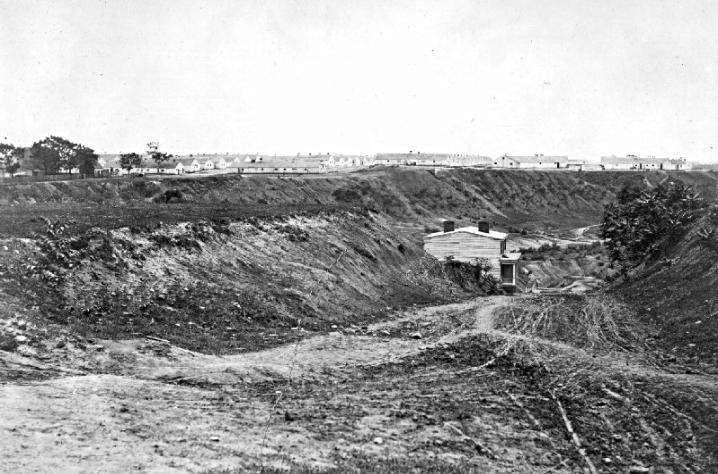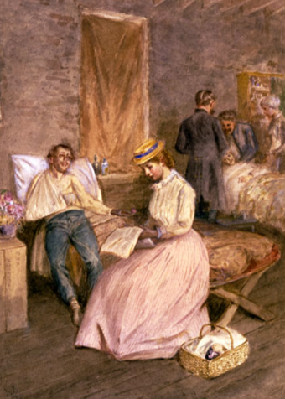
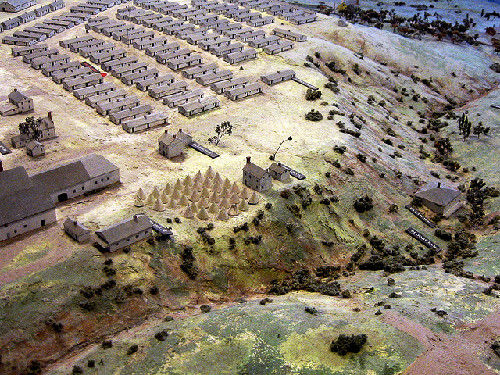
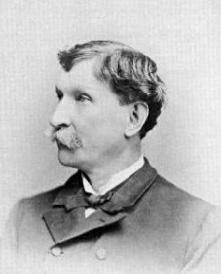
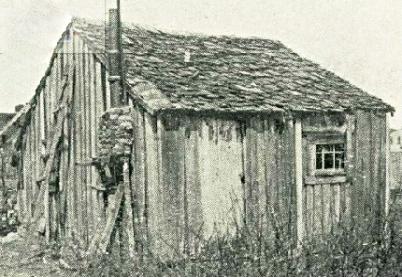
| Chimborazo Hospital Richmond, Virginia |
| In the background, Chimborazo Confederate Hospital, 1865 (For a larger version of this image, click here.) |
Chimborazo Hospital, on the eastern edge of Richmond, was the largest military hospital in the world at the
time of the Civil War. When the war first started, Confederate soldiers converged on Richmond for
organization and drill. Several large regiments camped on Chimborazo Hill and constructed over 100
barracks. They soon abandoned these quarters and marched off to the front lines, leaving the buildings
behind. The Surgeon General of the Confederate States commandeered the buildings and established
Chimborazo Hospital.
Dr. James B. McCaw served as the hosptial's chief and forged the complex to suit his ideas about how a
large military post hospital should function. In due course, he had Chimborazo operating like a small city.
According to "History of Chimborazo Hospital," about 76,000 patients passed through the facility during its
three and a half years. The percentage of deaths was a little over 9 per cent, about 7,000. (The men who
died at Chimborazo were usually buried at Oakwood Cemetery, about a mile away.)
Chimborazo was not a field hospital, but a convalescent hospital. Most soldiers arriving there from the
battlefield had been injured several days earlier, had received emergency treatment, and were then
transported to Chimborazo by railroad or ambulance. Many men wounded at the Battle of Seven Pines were
brought to Chimborazo Hospital.
Chimborazo operated from October, 1861 until April, 1865. When the war ended, so did the life of its
wooden buildings. Some of the structures briefly served as a day school operated by the Freedmen's
Bureau, but most of the buildings quickly disappeared. The local residents tore most of the hospital wards
down and used the wood for construction or for firewood. The last structure disappeared in the early 1900's.
The site of Chimborazo Hospital has been used as a park since the 1870's. The park, under the auspices of
the U.S. National Park Service, has established a Chimborazo Medical Museum.
time of the Civil War. When the war first started, Confederate soldiers converged on Richmond for
organization and drill. Several large regiments camped on Chimborazo Hill and constructed over 100
barracks. They soon abandoned these quarters and marched off to the front lines, leaving the buildings
behind. The Surgeon General of the Confederate States commandeered the buildings and established
Chimborazo Hospital.
Dr. James B. McCaw served as the hosptial's chief and forged the complex to suit his ideas about how a
large military post hospital should function. In due course, he had Chimborazo operating like a small city.
According to "History of Chimborazo Hospital," about 76,000 patients passed through the facility during its
three and a half years. The percentage of deaths was a little over 9 per cent, about 7,000. (The men who
died at Chimborazo were usually buried at Oakwood Cemetery, about a mile away.)
Chimborazo was not a field hospital, but a convalescent hospital. Most soldiers arriving there from the
battlefield had been injured several days earlier, had received emergency treatment, and were then
transported to Chimborazo by railroad or ambulance. Many men wounded at the Battle of Seven Pines were
brought to Chimborazo Hospital.
Chimborazo operated from October, 1861 until April, 1865. When the war ended, so did the life of its
wooden buildings. Some of the structures briefly served as a day school operated by the Freedmen's
Bureau, but most of the buildings quickly disappeared. The local residents tore most of the hospital wards
down and used the wood for construction or for firewood. The last structure disappeared in the early 1900's.
The site of Chimborazo Hospital has been used as a park since the 1870's. The park, under the auspices of
the U.S. National Park Service, has established a Chimborazo Medical Museum.
| A model of Chimborazo Hospital as it looked in 1865. Photo courtesy of john.murden and Flickr Creative Commons. |
| The Last of Chimborazo Hospital One of the buildings formerly used in Gen. McGruder's Ward, Chimborazo Hospital complex, is shown in the photo above. It had been moved to the corner of 34th and Broad Streets and was still being used as a residence in 1900 when this photo was taken. It was the last piece of Chimborazo construction still standing. |
| Dr. James B. McCaw Chief of Chimborazo |
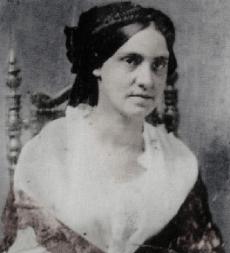
| Phoebe Pember, above, was a matron at Chimborazo Hospital for three years. In a letter to her sister, she wrote: "I sometimes wonder if I am the same person, for I have no timidity and hardly any sensibility left. After the Battle of Fredericksburg, I stood by and saw men's arms and legs cut off, held brandy to their lips, and washed the wounds myself." |
| This painting of a ward in a Civil War military hospital is titled "Hospital, 1861;" the artist was William Ludwell Sheppard. |
